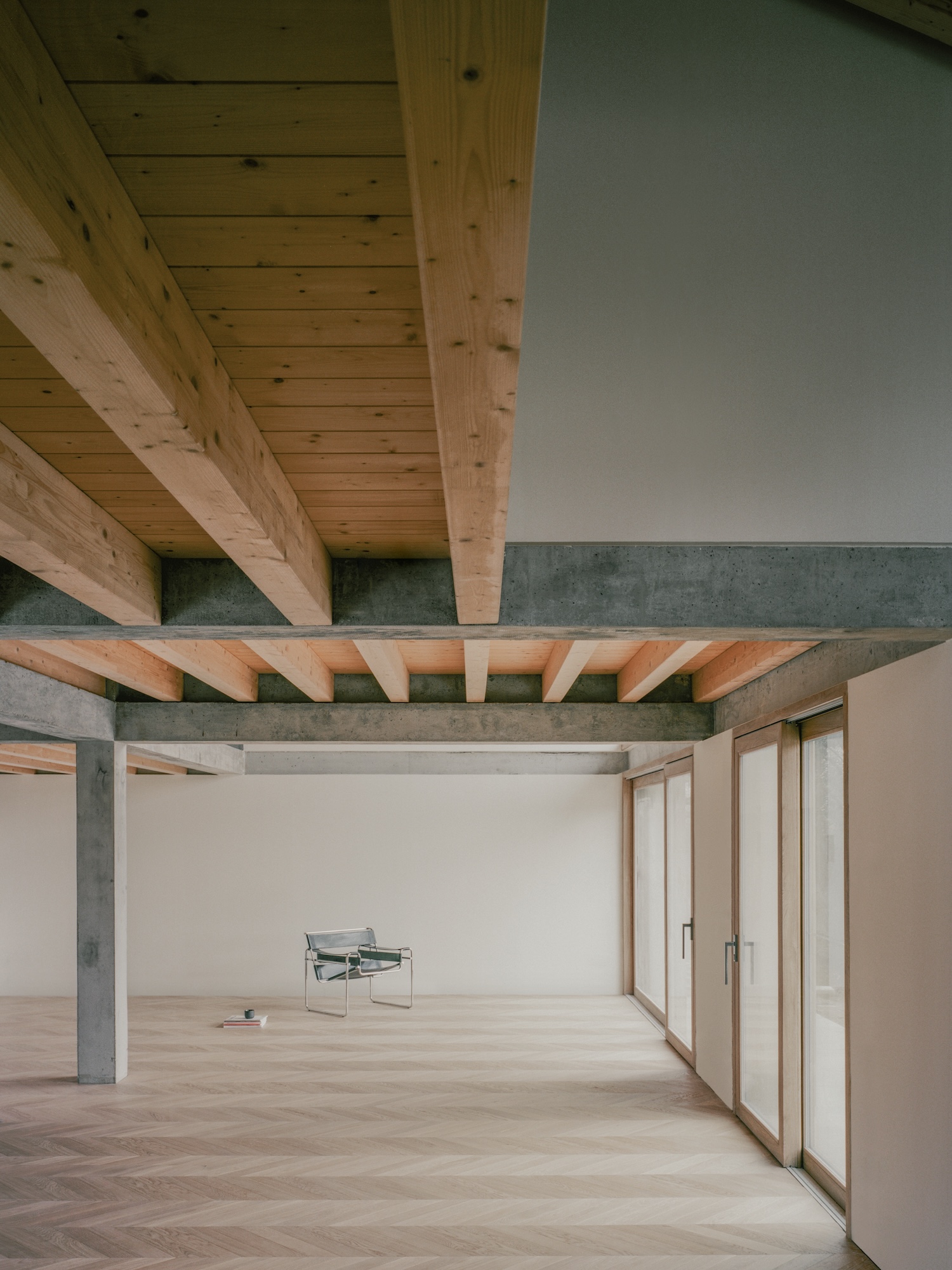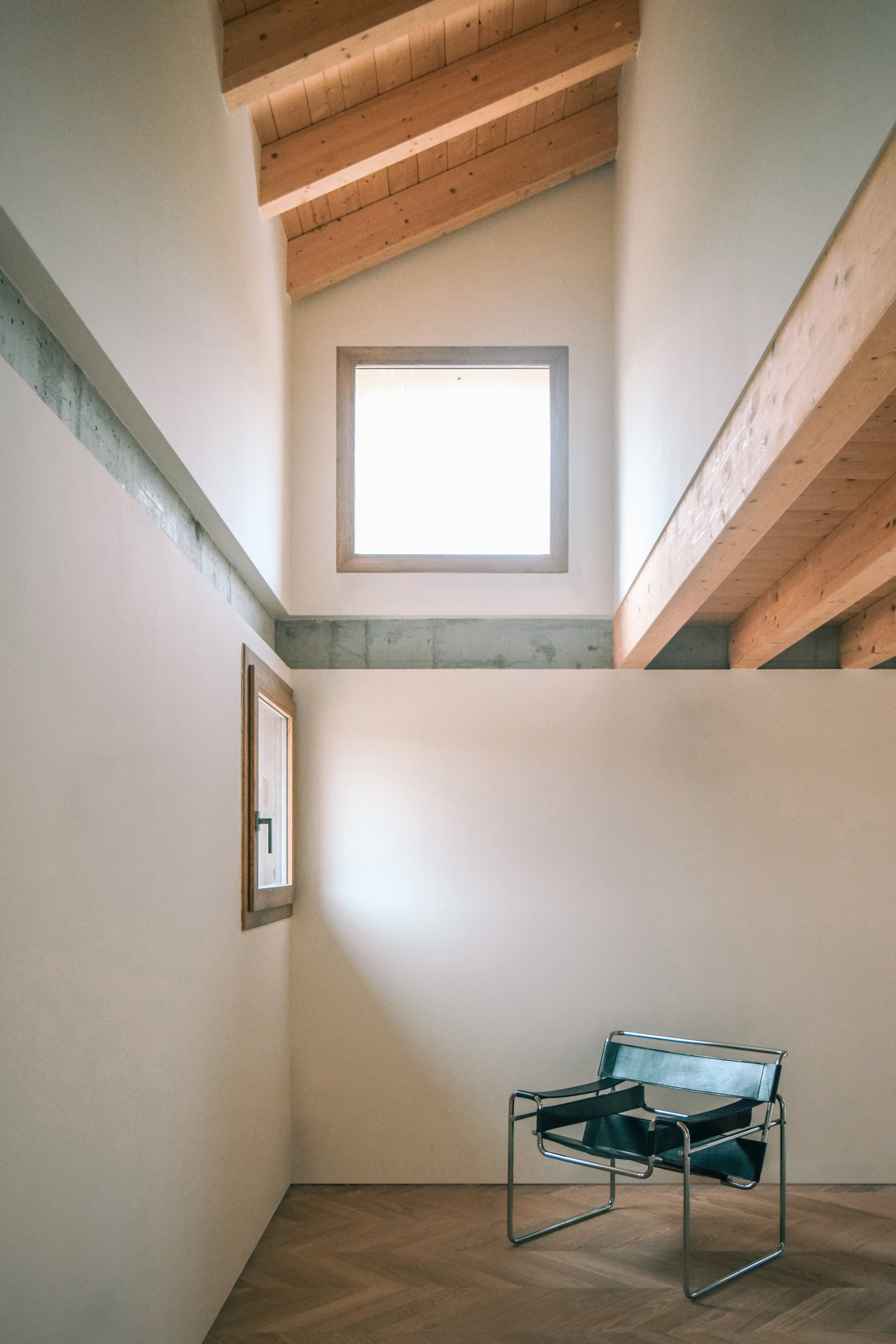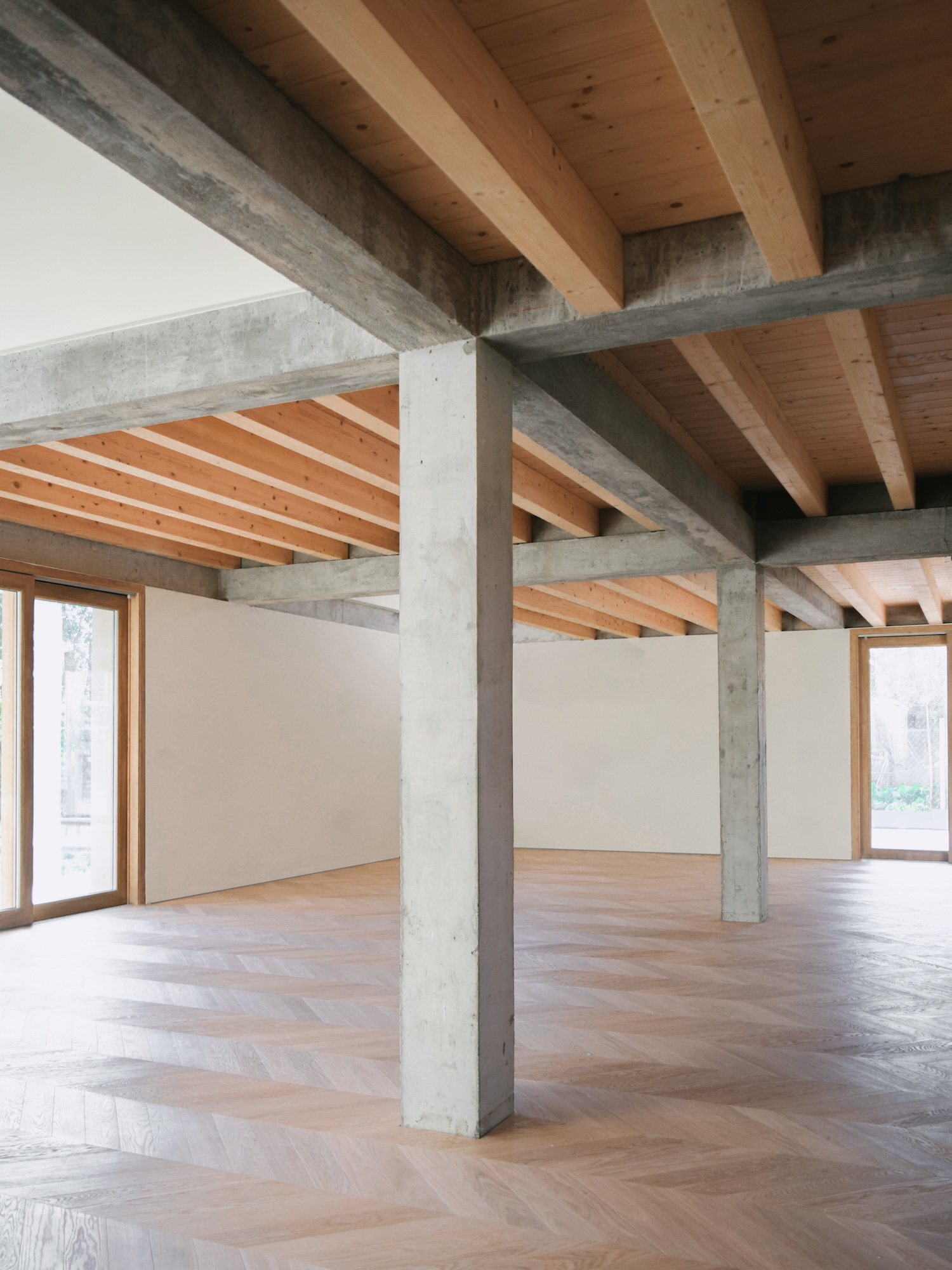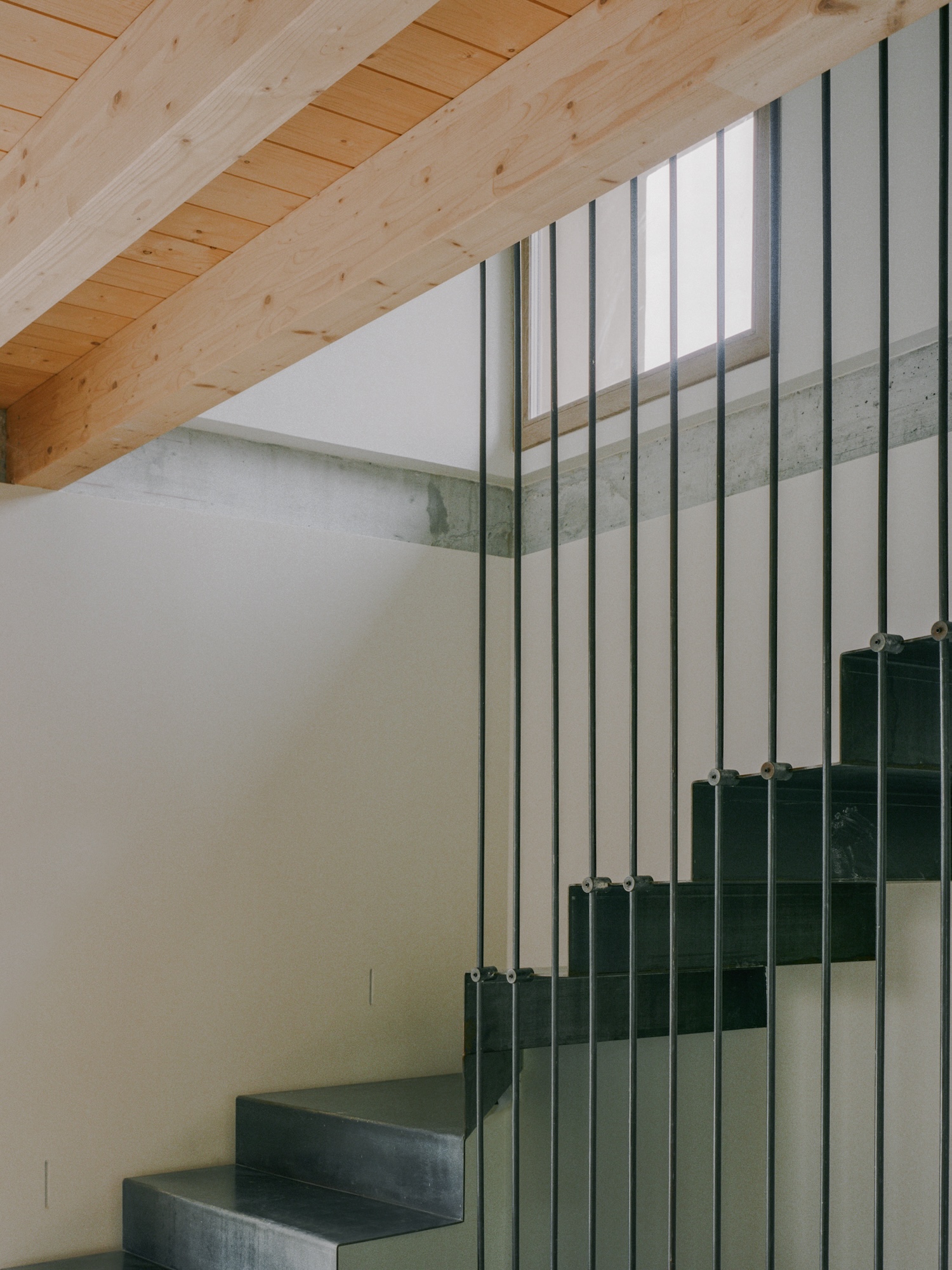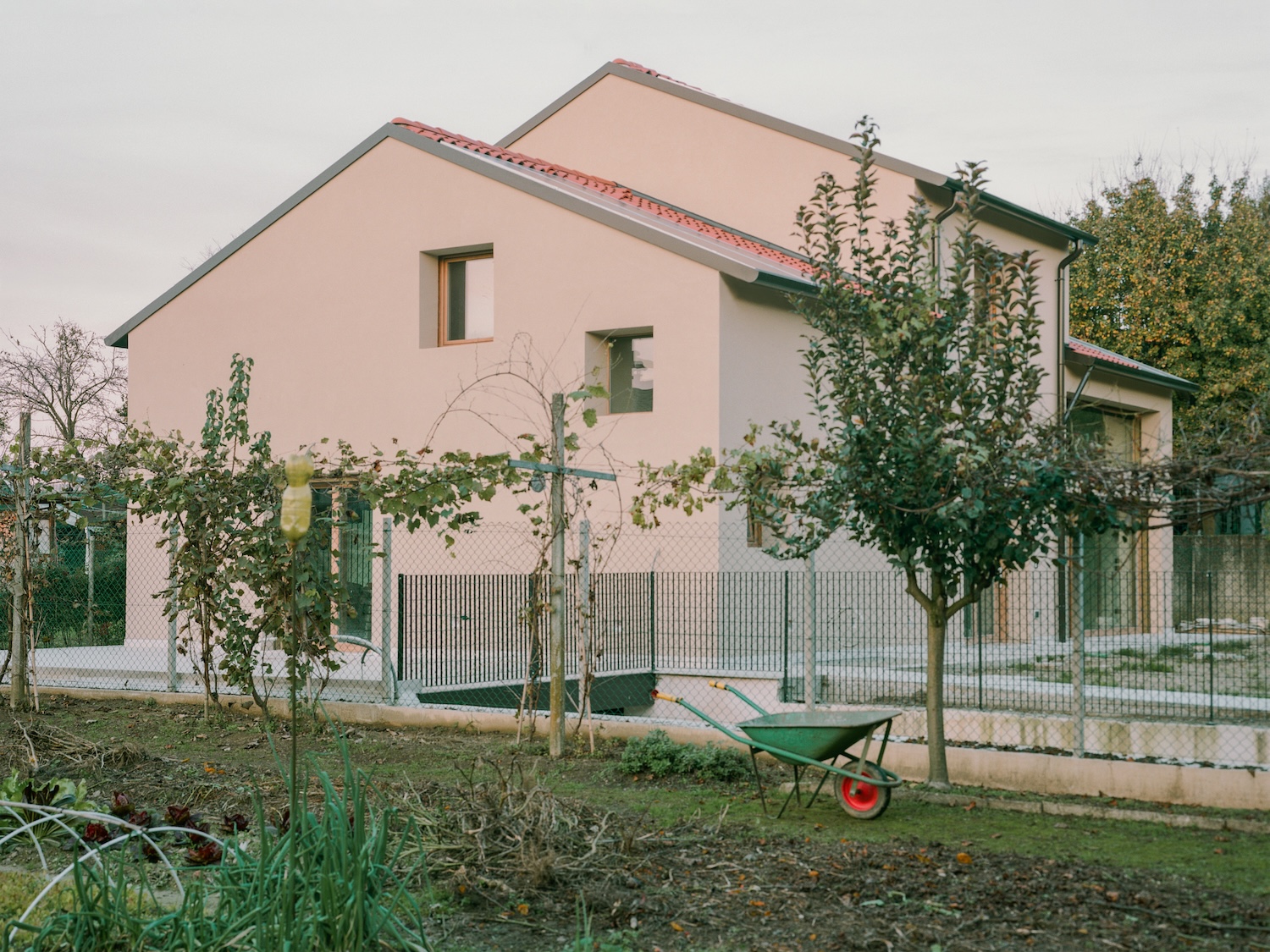Not a Rural House is a minimal home located in Padova, Italy, designed by AACM – Atelier Architettura Chinello Morandi. There’s a moment when you step into Not a Rural House, when the disguise drops away. Outside, a familiar silhouette of rural Italian vernacular; inside, exposed concrete frames and timber beams announce the truth without apology. This tension—between regulatory deception and architectural honesty—forms the central narrative of a project that transforms legislative constraint into creative opportunity.
The design springs from a peculiar Italian building code that requires new structures to mimic the dimensions and outlines of the ruins they replace. Rather than simply comply with this mandate for architectural cosplay, the designers have embraced the paradox, creating what they themselves call a “fake”—a contemporary home forced to wear the costume of tradition.
What makes this approach compelling is how it transforms regulation from mere obstacle into conceptual framework. The exterior maintains the required rural appearance, but the interior strips away the pretense, proudly displaying its reinforced concrete and timber skeleton. This isn’t defiance for its own sake, but rather a thoughtful examination of how architecture can engage with history beyond superficial mimicry.
Inside, the designers turn to a deeper historical conversation, drawing on Palladian proportional systems characteristic of Venetian villas. The 2+3=5 ratio governs the spatial organization, creating modular rooms that establish rhythm and coherence throughout the interior. This sophisticated reference points to a more meaningful engagement with architectural heritage than the mere replication of façade treatments.
The spatial experience unfolds as a series of carefully choreographed moments. Visual diagonals and framed views of the countryside create a dynamic relationship between interior and landscape. Natural light becomes an active design element, washing walls and highlighting the warm tones of the timber elements. These sensory qualities reconnect the home to its rural setting in ways far more meaningful than external appearance ever could.
